One evening in late October 2014, a doctor checked his own pulse and stepped onto a subway car in New York City. He had just returned home from a brief stint volunteering overseas, and was heading to Brooklyn to meet some friends at a bowling alley. He was looking forward to this break — earlier that day he had gone for a run around the city, grabbed coffee on the High Line, and eaten at a local meatball shop. When he woke up the next day exhausted with a slight fever, he called his employer.
Within 24 hours, he would become the most most feared man in New York. His exact path through the city would be scrutinized by hundreds of people, the establishments he visited would be shuttered, and his friends and fiancée would be put into quarantine.
Dr. Craig Spencer had contracted Ebola while he was treating patients in Guinea with Doctors Without Borders. He was not contagious until long after he was put into quarantine. He followed protocol to the letter in reporting his symptoms and posed no threat to anyone around him while he was in public. He was a model patient — a fact readily shared by experts.
This did not stop a media explosion declaring an imminent apocalypse. A frenzy of clickbait and terrifying narratives emerged as every major news entity raced to capitalize on the collective Ebola panic.
The physical damage done by the disease itself was small. The hysteria, however — traveling instantly across the internet — shuttered schools, grounded flights, and terrified the nation.
Social Media exploded around the topic, reaching 6,000 tweets per second, leaving the CDC and public health officials scrambling to curtail the misinformation spreading in all directions. The fear traveled as widely as the stories reporting it. The emotional response — and the media attached to it — generated billions of impressions for the companies reporting on it.
Those billions were parlayed directly into advertising revenue. Before the hysteria had ended, millions of dollars worth of advertising real-estate attached to Ebola-related media had been bought and sold algorithmically to companies.
The terror was far more contagious than the virus itself, and had the perfect network through which to propagate — a digital ecosystem built to spread emotional fear far and wide.
I’m going to tell you a few things you probably already know
Every time you open your phone or your computer, your brain is walking onto a battleground. The aggressors are the architects of your digital world, and their weapons are the apps, news feeds, and notifications in your field of view every time you look at a screen.
They are all attempting to capture your most scarce resource — your attention — and take it hostage for money. Your captive attention is worth billions to them in advertising and subscription revenue.
To do this, they need to map the defensive lines of your brain — your willpower and desire to concentrate on other tasks — and figure out how to get through them.
You will lose this battle. You have already. The average person loses it dozens of times per day.
This might sound familiar: In an idle moment you open your phone to check the time. 19 minutes later you regain consciousness in a completely random corner of your digital world: a stranger’s photo stream, a surprising news article, a funny YouTube clip. You didn’t mean to do that. What just happened?
This is not your fault — it is by design.
The digital rabbit hole you just tumbled down is funded by advertising, aimed at you. Almost every “free” app or service you use depends on this surreptitious process of unconsciously turning your eyeballs into dollars, and they have built sophisticated methods of reliably doing it. You don’t pay money for using these platforms, but make no mistake, you are paying for them — with your time, your attention, and your perspective.
This is not a small, technical shift in the types of information you consume, the ads you see, or the apps you download.
This has actually changed how you see the world.
The War for Your Attention
Before I go any further, let me assure you that this is not a list of grievances about the evils of technology. I am not a Luddite. Like much of humanity, I deeply value my devices as a helpful prosthesis for my memory, my productivity, and my ability to connect to the people I care about.
This is instead a sober evaluation of how the strategies of digitally capturing our attention have altered us — our lives, our media, and our worldview. These incremental shifts have added up to enormous changes in our politics, our global outlook, and our ability to see each other as fellow humans.
Many of the biggest problems we face in this moment as a society result from decisions being made by the hidden creators of our digital world — the designers, developers, and editors that create and curate the media we consume.
These decisions are not made with malice. They are made behind analytics dashboards, split-testing panels, and walls of code that have turned you into a predictable asset — a user that can be mined for attention.
They do this by focusing on one over-simplified metric, one that supports advertising as its primary source of revenue. This metric is called engagement, and emphasizing it — above all else — has subtly and steadily changed the way we look at the news, our politics, and each other.
This article is one of a series exploring how these strategies of capturing our attention are influencing our lives.
What follows is an exploration of how the primary artery of our factual information — the News — has been fundamentally altered by these methods.
How? Let’s look to the recent past.
The History of the New
“The Media” as we know it is not that old. For most of our history the News was, literally, the plural of the ‘New’ thing(s) people heard about and shared, and was limited by physical proximity and word-of-mouth. Since the invention of the printing press, the news consisted of notes posted in public places and pamphlets distributed to the small number of people who could actually read them.
Between the 18th and 19th centuries newspapers became fairly common, but were largely opinion rags containing political essays, sensationalized stories, and eventually muckraking. They were megaphones for people to exert political influence, and many had an extremely loose relationship with facts.
During the lead up to World War I, unchecked propaganda from all sides in the news reached a fever-pitch, with every belligerent participating in a massive fight for public opinion. By the end of the war it was clear that information warfare was a powerful weapon — it could raise armies, incite violent mobs, and destabilize whole nations.
In response to this systematic manipulation of the truth, there was a concerted effort to create an institution of fact-driven journalism beginning in the 1920's. This process was ushered forward by the advent of the first mass-media communication networks: national newspapers and national radio. These slowly gave way to television, and between these three new platforms, a global media system took hold — buoyed by the tenets of journalism.
The news continued to have competitors in the battle for attention, and because of this it continued to flirt with hyperbole. The drive to sell (papers, ads, products) is naturally somewhat at odds with the idea of editorial accuracy and measured factual reporting. Journalistic standards, libel laws, and industry-shaming became common mechanisms to help curb this slide into sensationalism.
Yet something happened recently when the news met the internet and began migrating into our pockets: it started losing the battle for our attention.
The Rise of Algorithmic Engagement
Today the news needs to compete with everything else in our digital life — thousands of apps and millions of websites. More than anything, it now competes with Social Media — one of the most successful attention-capturing machines ever created.
Social Media is one of the primary reasons there has been a double-digit drop in newspaper revenues, and why journalism as an industry is in steep decline. It is now how a majority of Americans get news.
The biggest player in Social Media is Facebook, and the biggest part of Facebook is the News Feed.
The algorithm behind the News Feed is regularly tweaked and historically opaque — it is one of the most significant and influential pieces of code ever written. You can think of the algorithm as the News Feed Editor. (Twitter, Snapchat and Youtube all have their own editorial algorithms, but we’re focusing on Facebook here because of its sheer dominance.)
The News Feed Editor is a robot editor, and it is far better at capturing attention than normal human editors. It can predict what you’ll click on better than anyone you know. It’s what professor Pablo Boczkowski of Northwestern has called “the greatest editor in the history of humanity.”
It shows you stories, tracks your responses, and filters out the ones that you are least likely to respond to. It follows the videos you watch, the photos you hover over, and every link you click on. It is mapping your brain, seeking patterns of engagement.
It uses this map to create a private personal pipeline of media just for you. In doing this it has essentially become the editor-in-chief of a personalized newspaper that 2 billion people read every month.
By traditional journalistic standards, however, the News Feed Editor is a very, very bad editor. It doesn’t differentiate between factual information and things that merely look like facts (as we saw with the massive explosion of viral hoaxes during the 2016 election). It doesn’t identify content that is profoundly biased, or stories that are designed to propagate fear, mistrust, or outrage.
The News Feed Editor has literally changed the way news is written. It has become the number one driver of traffic to news sites globally, and that has shifted the behavior of content creators. To get a story picked up by the News Feed Editor, news producers (and human editors) have changed their strategies to stay relevant and stem losses. To do this, many news organizations have adopted a traffic-at-all-costs mentality, pushing for more engagement at the expense of what we would traditionally call editorial accuracy.
This is the reason many of the news stories you see today lead with over-the-top, dramatic, attention-grabbing statements — they are trying to engage with you and rise above the competition. This is the ‘inside baseball’ of the news industry. They’ve been losing the battle for attention, and they have become desperate.
What The News Does To Stay Alive
Hacking your attention with emotional packaging
Emotional responses are one of the most prominent ways to gauge the value of a post, and the easiest things for the News Feed Editor to map, measure, and provide more of. These are emotional hijacks — based on affective engagement.
The News Feed tends to prioritize content with these affective emotional hacks — they lead to more clicks, likes, shares, and comments. As content producers compete for this type of affective engagement, this battle for attention creates what tech ethicist Tristan Harris has called “a race to the bottom of the brain stem.”
Sensationalized headlines are a huge part of this. These news items are stickier and gain more traction with the News Feed Editor. They propagate faster and drive more traffic than their less hyperbolic counterparts.
A sample of top performing word series from a recent study of 100 million headlines includes:
Tears of joy
Make you cry
Give you goosebumps
Is too cute
Shocked to see
Make you cry
Give you goosebumps
Is too cute
Shocked to see
This is called ‘Headline Packaging’. It’s the way in which a news story is contextualized, or packaged, specifically to garner more clicks. The person who writes the headline is rarely the author of the story itself.
As Fusion editor Felix Salmon recently wrote, “The amount of time and effort put into ‘packaging’ a story can significantly exceed the amount of time and effort that went into writing it in the first place.”
Packaging is done through A/B testing, which is a way to hack your way to more traffic. By testing dozens of different headlines and measuring which ones get the most clicks, the process of writing a headline can be abstracted into a game. The goal? Capture as much attention as possible.
There are powerful tools for doing this packaging, and both Facebook and Twitter encourage it — they call it optimization. With these tools and a small amount of creativity, a factual story can become provocative or sensational simply depending on how the headline is written.
The problem with this is that the majority of people who see these posts on social media don’t actually click through to read the articles themselves. For many users, the headline itself becomes the story, even if it doesn’t resemble the original factual event.
You can quickly see how these strategies can be used to turn content hyper-partisan, divisive and/or outrageous. As a former VP at Elite Daily recently told me, “It’s not our job to challenge political opinions. It’s our job to ride your politics as far as we can.”
This is no secret in the publishing world: partisanship is an amazing driver of engagement. People prefer to click, comment, and share the things that make them feel good — and stories that confirm beliefs feel good.
How It’s Changing Us
When perceived threats become “realities”
Engagement optimization has distorted our perception of threats at a very high level.
For most of our species’ history, available information tended to be really helpful for our survival. If you heard a lot of stories about wild dog attacks, you learned to be vigilant about wild dogs.
This is due to something in human nature called the availability heuristic.It is a shortcut for our brains which makes us believe: “If it comes to mind easily, it must be true.”
Since available information tended to be our best indicator of probability, our brains evolved this system to help us know what to expect from the world around us. This became overly pronounced with threats, as the advantages of being afraid of things that might kill us far outweighed the costs (for our ancestors, dying was a lot worse than just being overly cautious).
But today, available information about threats doesn’t resemble reality at all — it is primarily a reflection of the media we consume.
Let’s look at the US crime rate:
Regardless of the dramatic drop in crime over the last 30 years, more than half the population believes crime is worse than it was in years past.
Media (and now Social Media) is a major component in the assumptions that inform our perspective. A focus on crime in news reporting doesn’t just change our opinions on crime in general — it makes us feel far more threatened than we should be. For most of us, perceptions are reality. When we see the world as a dangerous place, it changes our behaviors and our attitudes, regardless of the actual threat.
How our media system fuels our fears
A critical example of this is terrorism, which today feels more prominent than at any time in modern history. Reading the front page of any major newspaper suggests that it is one of the top causes of death worldwide.
Yet terrorism related homicides are a tiny fraction of the overall homicide rate, particularly in the US. There is profound asymmetry in coverage of terrorist attacks vs. other types of homicides, as illustrated by a recent 2 year sampling of front-page stories collected from the New York Times.
Terrorism is a powerful emotional event. One that seems to insult the very foundations of civil society and human dignity. There are many legitimate reasons for us to be disgusted by such attacks, and for us to cover and discuss them publicly.
Yet this is the uncomfortable truth of terrorism’s prominence in our lives: We have built an instant distribution system for its actual intent — Terror.
The fear of it far outstrips the likelihood of it happening to us or anyone we know. More ominously, the excessive coverage of these attacks is often the exact desired outcome of those who commit them.
The so-called Islamic State (ISIS) took advantage of this hyperbolic media ecosystem during their rapid rise to prominence in just three short years beginning in 2014. Understanding they were fighting a battle for attention, they prioritized their brand just as much as their military efforts, building a media wing to push boundaries and exaggerate their exploits as winning, sustaining, and growing. This effort to dominate the media narrative through horrifying acts built them into a principal threat to the west, despite the fact they had a fairly small standing army, limited resources, and almost no international support.
Media coverage allowed ISIS to use their narrative to recruit fighters from around the world to both Syria and Iraq, as well as inspiring attacks by disaffected individuals with no formal ties to the actual organization.
ISIS and entities like it know they are battling for attention, and have learned how to play the game. The sad truth is that a terrorist attack, a horrifying massacre, or even just a visceral threat — each of these will make real money for a media company.
The media has become a spotlight shining on these individual stories, casting a huge shadow that is far more terrifying than the actual events.
How our media fuels outrage and changes politics
The same dynamic plays out in the political arena. During the 2016 election cycle, CNN made over a billion dollars in gross profit above the previous year driven primarily by advertising attached to news about the most outrageous candidate: Donald Trump.
This was far from the first time he explored running for president. In 1987, 2000, 2004, and 2011, Trump publicly considered a bid for the nation’s highest office. In 1999 he officially entered the race as a Reform Party candidate, testing his platform and evaluating the response, ultimately deciding he couldn’t get the traction necessary to win. After his unsuccessful run in 1999 Newsweek noted there simply wasn’t enough anger in the country to propel an independent candidate to victory.
His tone has not changed much in the last three decades. What was different about those previous years? One key distinction was this: The media wasn’t optimized for the kind of outrage necessary to provide coverage for a candidate like Trump.
This was the mechanism that came to define the 2016 campaign: the more outrageous his words, the more coverage he received. The more coverage he received, the more viable his candidacy became. The analytics firm Mediaquant estimated that between October 2015 and November 2016, Trump received $5.6 Billion dollars in “free” earned media from this strategy, three times his nearest rival.
Having media platforms at your disposal is a massive advantage in politics. In any election, one of the principal challenges is rising above your competitors and getting noticed.
These stories about candidates traveled faster and farther on Social Media than anywhere else. Facebook and Twitter — like CNN — saw massive traffic and revenue spikes thanks to the sensationalized news propagated on their platforms and the attention they captured.
Trump’s ideology, attitude, and statements played upon anxiety about global threats. The legitimacy of his candidacy was partially dependent upon many of those threats being perceived as real.
We Have Democratized Propaganda for Profit
It’s impossible to look at the media system as a separate thing from functioning democracies. Our opinions are always affected by the news, and our voting decisions reflect that knowledge. If you look at society like a big collective human organism, the news media is something like a central nervous system. It helps us respond to threats, share information, and figure out what needs to be fixed.
How this nervous system is controlled and influenced dictates a tremendous amount about how society works — what we care about, who we protect, who we fight. Throughout the 20th century, politicians, moguls, and academics knew the value of this influence. It had a name: propaganda.
Propaganda required money, talent, and infrastructure to create and distribute. It was an expensive and blunt instrument for top-down control.
Today we have democratized propaganda — anyone can use these strategies to hijack attention and promote a misleading narrative, a hyperbolic story, or an outrageous ideology — as long as it captures attention and makes a profit for advertisers.
Journalism — the historical counter to propaganda — has become the biggest casualty in this algorithmic war for our attention. And without it, we are watching the dissolution of a measured common reality.
This Isn’t Going Away
In many ways these algorithms are a reflection of us. They are mapping natural human behaviors and tendencies — what we’ll click, what we’ll be outraged by, what we’ll love. They are part of us. But these maps include some of our worst biases, irrational fears, and bad habits. We must design these algorithms to account for them.
We have inadvertently created a media system that monetizes many of our flaws. It will not go away — we cannot simply put it back in the box.
The knowledge of how to reliably hijack the human brain for attention is one of the most significant new trends of the 21st century. This discovery, like every large-scale invention in our history, has unexpected outcomes that are difficult to predict.
If we wish to continue to live in a common reality, we must be willing to look at these outcomes with a clear head. Addressing our biggest issues as a species — from climate change, to pandemics, to poverty — requires us to have a common narrative of the honest problems we face: Real threats. Real reasons for outrage.
Without this, we are undermining our greatest strength — our unique ability to cooperate and share the careful and important burdens of being human.
Some Thoughts on Solutions
I have been collecting them — and they are more than can fit here. The News Feed Editor and others like it are still in their infancy. As we learn more about how these tools of algorithmic engagement skew our reality, no single company is to blame. Google, Apple, Snapchat, Twitter, Facebook and literally every major media provider are players in this arms race to capture our attention.
The owners of these tools have enormous influence: on the media, on our lives, and ultimately on a piece of the collective psyche of humanity. That influence needs to be understood — and discussed — as we move into a future with real uncertainty.
In my next post, I’ll explore exactly how, and what we can do to help them fix it.

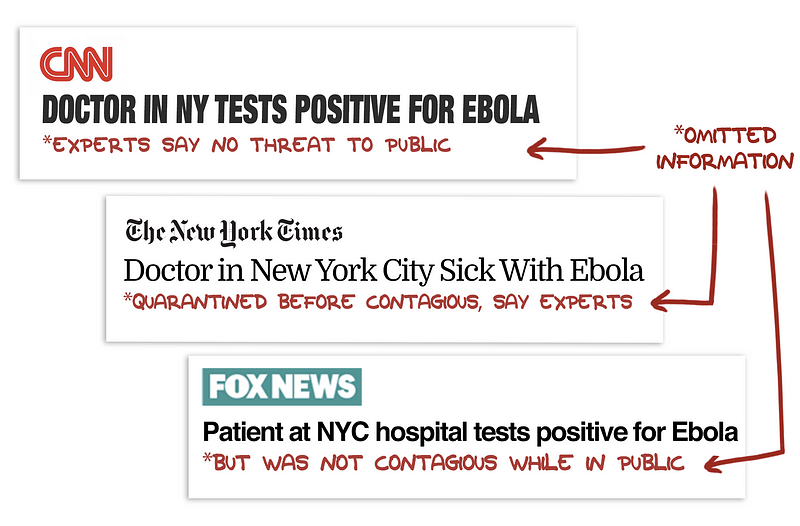


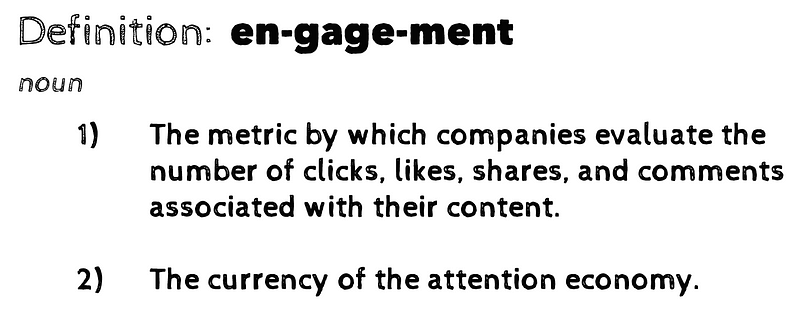

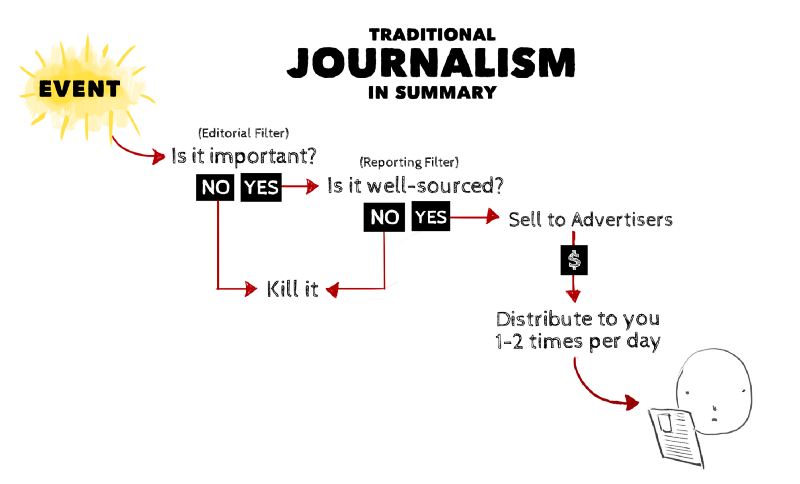

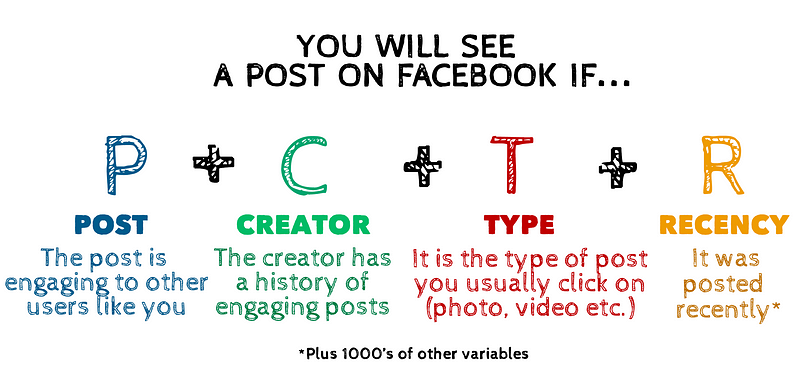

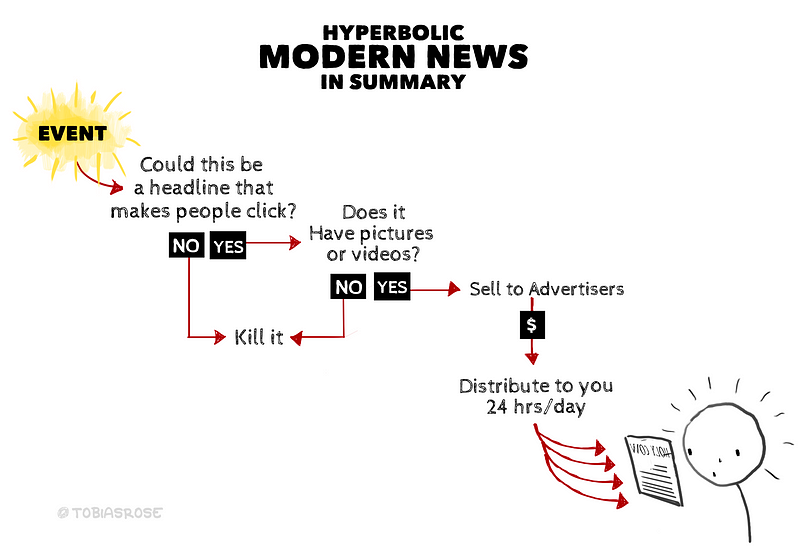
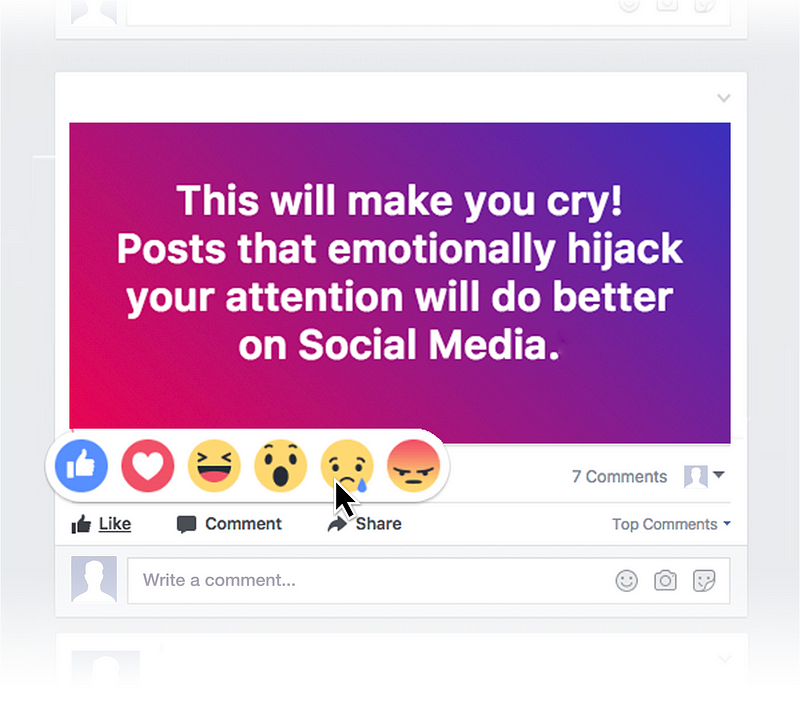

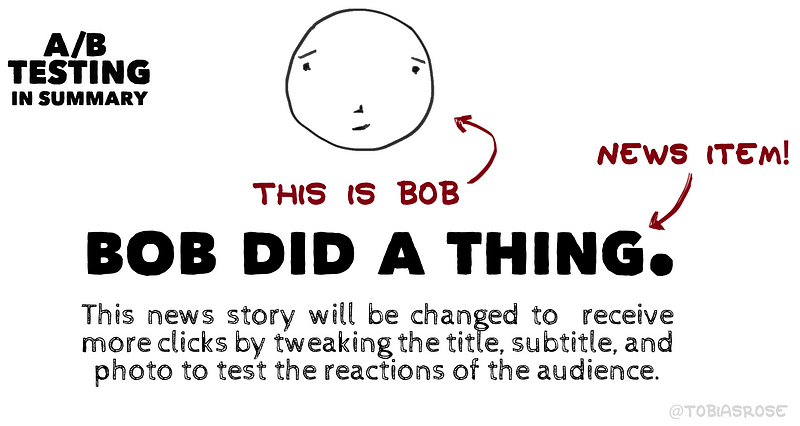





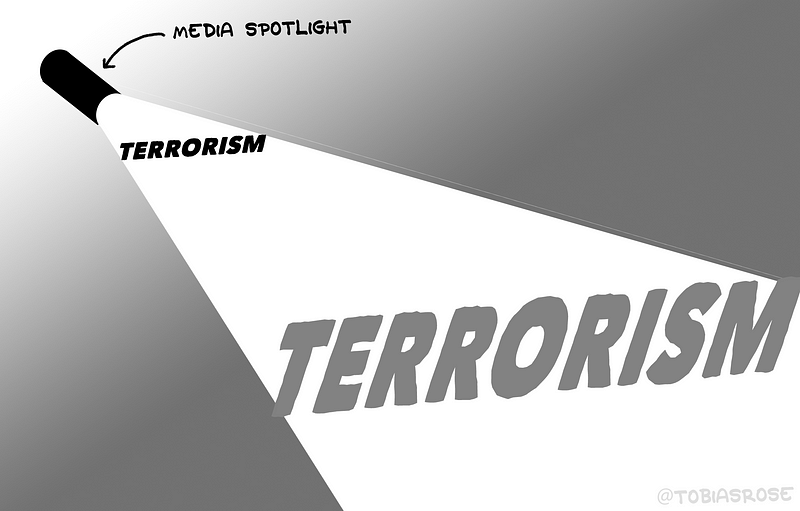
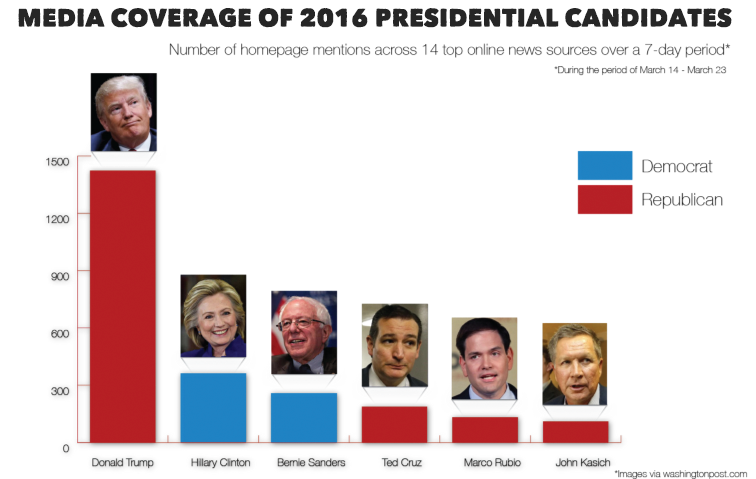
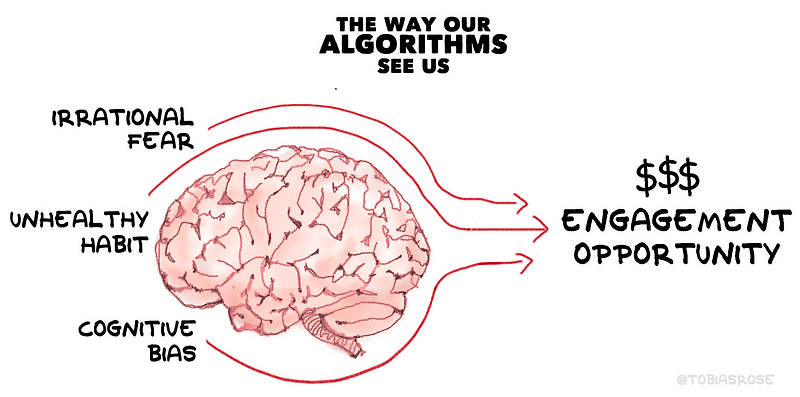
Comments
Post a Comment